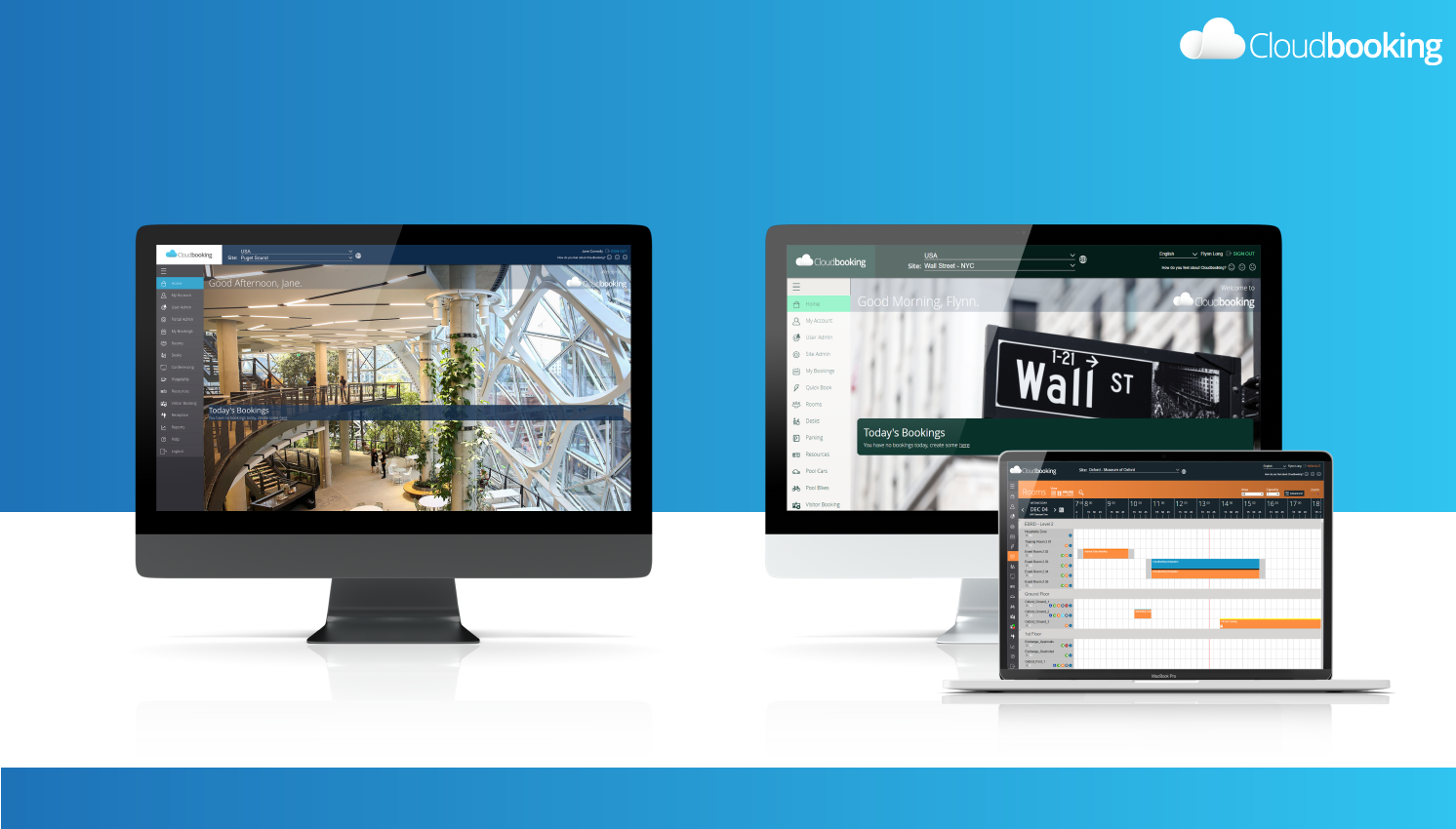
A workplace is a physical location where an employee goes, whereas a workspace is the environment and context of the workplace.
Put simply, the workplace is where you go to work; the workspace is where you do your job.
These two concepts are vital to understand if businesses are to create an effective and engaging employee experience that provides optimised conditions for growth and improved performance. When appropriately utilised, workplace and workspace design strategies can be immensely beneficial in creating favourable conditions that allow employees to effectively achieve their organisation’s goals. Good workplace and workspace design can improve job satisfaction, creativity, performance, productivity, and collaboration among employees.
The workspaces and workplaces of today
The idea of workplace vs workspace has become a common concept as the traditional boundaries of office real estate continue to be blurred. With the emergence of more fluid and flexible approaches to working, businesses are encouraged to take advantage of an array of opportunities that can help us all work and collaborate more effectively.
This shift has also required us to develop new terminology for different concepts, with words like “teleworking” and “outsourcing” now commonplace in business jargon. Ultimately, how we work today is far removed from how we did things just a few years ago — although what this means for our workplace remains to be seen.
Related reading: 8 Takeaways from Cloudbooking’s Research on the Future of the Workplace
The definition of workplace
The workplace is an ever-evolving environment. It’s a space designed not only to get work done but also to foster collaboration and communication between different team members. Different tools, processes, and insights are shared, catalysing potential innovations in ideas and product solutions.
This healthy level of interconnectivity is essential for any successful business model today. It allows us to embrace multiple perspectives, confront challenges more effectively and — most importantly — inspire each other towards achieving the ultimate goal: success. Consequently, the influential role of the workplace cannot be understated.
The definition of workspace
The workspace is an essential element of productivity. Whether in a more traditional office space like a cubicle or part of the new wave of remote work such as hot desking or virtual settings like working from home or a coffee shop, everyone needs their own dedicated workspace that inspires creativity and vision.
Studies suggest having a neat and tailored workspace might increase overall efficiency. So it’s important to consider all of the various elements that make a productive workspace when selecting a suitable place to get work done. While functional considerations are the primary concern, aesthetics are certainly important.
Related reading: 7 Things You Need to Build a More Connected Workspace
However, things get a little more complicated when you look at the digital versions of the two terms.
Defining the digital workplace
The digital workplace is the perfect tool for teams of all kinds. It is a space that allows for collaboration in real-time, without the need to travel or set up at physical locations. Instead, everyone can join from the comfort of their own homes or offices and access vital information at their fingertips.
With intuitive interfaces like Slack and Trello — along with powerful project management software like Asana — teams are now empowered to take their projects further than ever before, meaning better efficiency and higher productivity. No matter where your team members are situated around the globe, they can work together on one unified platform to bring any project to life. That’s the digital workplace.
Related reading: The Manager’s Guide to Activity-Based Working (ABW) in the Hybrid Era
Defining the digital workspace
Digital workspaces have become an incredibly valuable asset in today’s work environment. By granting employees access to the right workspace tools, they can maximise efficiency and performance through increased organisation and easy access to their work materials.
Digital workspaces are increasingly composed of more than just an employee’s laptop or mobile. They may also include specialised software, programmes and devices designed to help them complete tasks quickly and effectively, thus allowing organisations to remain competitive in an ever-evolving digital world.
Ultimately, offering employees a digital workspace is essential for outstanding workplace practices as it promotes a free flow of labour and provides them with the maximum opportunity for success.
Related reading: Smart Offices: Connecting People & Real Estate with Integrations
Telling workplace vs workspace apart
The workplace and workspace are two distinct concepts that should not be confused. The workplace is a collective entity and caters to group needs, whether the workplace is physical or digital. On the other hand, the workspace can be seen as singular and tailored to individual requirements. It comprises separate entities that come together to form an environment that specifically meets each person’s needs.
Different industries may use different definitions for workplace and workspace, but there will always be a distinction between these two concepts. Understanding this distinction can help when creating team dynamics in any working environment.
Benefits of a well-designed workplace
A well-designed workplace is key for any forward-thinking company, as research has shown that doing so will pay dividends in terms of productivity and employee satisfaction. For example, employee experience designed with well-being in mind can yield productivity increases of as much as 25%.
Companies investing in features like air quality, acoustics, an ergonomic layout and indoor plants can expect to see satisfaction and engagement lift. As such, creating a location and atmosphere conducive to productive work should always be high on the list of priorities for businesses genuinely invested in their employees’ well-being.
Related reading: Are You Creating Psychological Safety in the Workplace?
Benefits of a well-designed workspace
A well-designed workspace can be a major asset to employees as well as the organisation. Studies have shown that when given control over the design and layout of their workspace, workers are healthier, more content and more productive.
Plus, job candidates on the hunt for employment are willing to sacrifice bigger paychecks if presented with an employee-centric workspace featuring quality digital UX and contemporary technology. Therefore, investing in a motivating workspace environment with strategic design is a worthwhile investment that benefits any company’s bottom line.
Related reading: Technologies That Improve Employee Well-Being
Ways to improve your workplaces and workspaces
A productive workplace is essential for any business to succeed. From increasing efficiency to promoting collaboration, there are many reasons to improve your workplaces and spaces to make them more conducive to productivity. Here are a few tips on how to get started.
Allow multiple ways of working
In the workplace, it’s important to consider our working style and that of those around us. By allowing employees freedom and flexibility to choose their workplace or workspace — from open office layouts and conference rooms with doors to a hybrid of virtual and in-person meetings — we can create an environment of engagement and increase motivation levels.
Such workplace diversification supports different types of workflows for teams and individuals, regardless of their preferences or whimsicality.
Related reading: How to Build an Employee Engagement Strategy for 2022
Gather data on how your employees work
Knowing how your employees work is essential for creating workplaces and workspaces that meet their needs and preferences. This can be achieved by collecting data such as surveys and interviews or tracking employee usage of online communication tools or performance metrics.
The data can help you identify workplace voids so that you can more easily improve productivity and make the workplaces and workspaces more suitable for an individual’s working style. Ultimately, it will promote workplace satisfaction and create an environment directed at success.
Provide the relevant technology
In today’s work environments, it’s critical to have the right technology in place to ensure maximum efficiency and productivity. By carefully selecting technology solutions tailored to each workplace or workspace, such as cloud-based software tools to collaborate remotely, you can create an environment where everyone can access the necessary resources when needed.
Furthermore, implementing productivity apps helps individuals keep track of their progress on tasks and projects with ease while also monitoring for signs of burnout. By exploring how workplace or workspace technology can improve operations, teams and individuals can develop greater control over their commercial activities leading to improved results.
Related reading: The Ultimate Guide to Employee Burnout: Early Signs, Driving Factors and Prevention Tips
Create different workspaces for different tasks
It’s essential to designate separate workspaces in the workplace to maximise focus and minimise distractions. Having multiple workspaces tailored to different tasks helps create an atmosphere where team members can feel comfortable and productive, whether working on individual projects or collaborating with others.
For example, designated breaks away from cubicles or desks can help refresh minds and maintain energy levels throughout the day. Implementing various workspaces within an office environment allows for optimal performance no matter what task is being tackled. By understanding the needs of team members and creating distinct spaces in accordance, employees will be well-equipped for success.
Related reading: How to Support Work-Life Balance for Employees: The Ultimate Cloudbooking Guide
Workplace vs workspace — differentiate for success
Designing an effective workplace and workspace, whether digital or physical, is essential for any business owner or team leader looking to increase productivity within their organisation.
From being open-minded about different working styles, gathering data on how your employees work best, providing relevant technology solutions, and creating different workspaces for different tasks — there are many ways to improve your workplace environment and make it more conducive towards achieving success!
Taking these steps will help boost morale amongst your team and drive positive results for your business in the long run.
One way to optimise your workplace for efficiency and productivity is by using desk booking software. This allows more fluid, hybrid workplaces to ensure that individual workspaces are always available for the in-office team members, meaning fewer productivity roadblocks. Book your free demo today, and see for yourself how your workplace and workspaces can be dynamically optimised.


